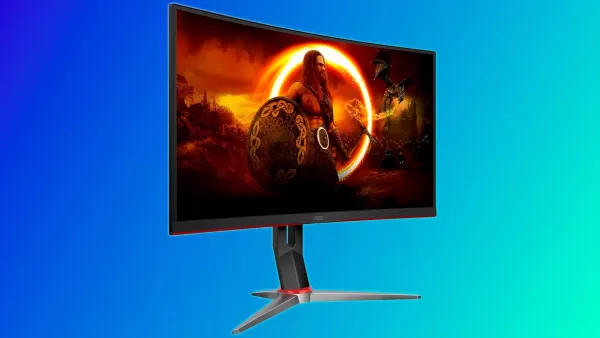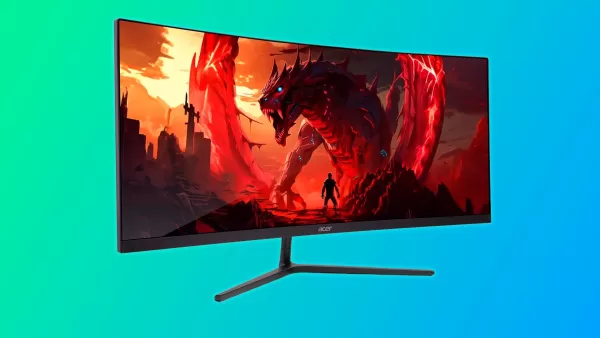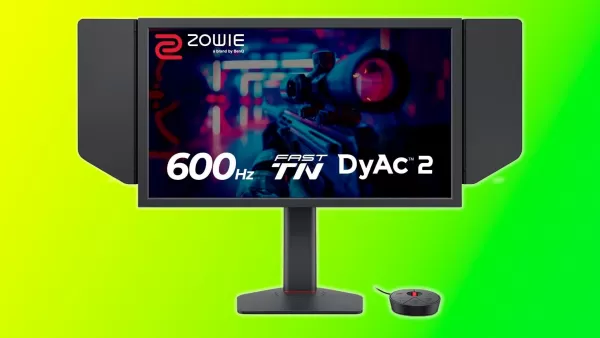In the world of PC gaming, the debate often centers around 1440p and 4K monitors. However, according to Steam's Hardware Survey, the majority of gamers still prefer 1080p. The reasons are compelling—cost-effectiveness and performance ease are key factors. This makes 1080p monitors a popular choice, with the market offering a plethora of options, which can make choosing the right one challenging.
Don't worry, I'm here to guide you through the best 1080p gaming monitors of 2025, ensuring you spend less time shopping and more time enjoying your games. Here are my top recommendations:
TL;DR – These Are the Best 1080p Gaming Monitors:
 Our Top Pick### Asus TUF Gaming VG279QM
Our Top Pick### Asus TUF Gaming VG279QM
2See it at Amazon ### Samsung Odyssey G30D
### Samsung Odyssey G30D
1See it at AmazonSee it at Best Buy  ### AOC Gaming C27F2Z
### AOC Gaming C27F2Z
2See it at Amazon ### Acer Nitro ED6 (ED306C Xbmiippx)
### Acer Nitro ED6 (ED306C Xbmiippx)
2See it at Amazon ### BenQ Zowie XL2586X+
### BenQ Zowie XL2586X+
0See it at Amazon
Opting for a 1080p gaming monitor offers several advantages. They are generally more affordable than their 1440p and 4K counterparts, support high refresh rates up to 500Hz, and often include features like AMD FreeSync and Nvidia G-Sync. Additionally, they require less powerful graphics cards to run smoothly, making them an excellent choice even for those with entry-level GPUs. However, keep in mind that 1080p can appear less sharp on screens larger than 27 inches. If you're interested in higher resolutions, be sure to explore our list of the best gaming monitors of 2025.

1. Asus TUF Gaming VG279QM
Best 1080p Gaming Monitor
 Our Top Pick### Asus TUF Gaming VG279QM
Our Top Pick### Asus TUF Gaming VG279QM
2
The Asus TUF Gaming VG279QM stands out as the best 1080p gaming monitor for most users. Priced under $300, this 27-inch Full HD display boasts an overclockable 240Hz refresh rate, low input lag, and adaptive sync for seamless gameplay. Its IPS panel delivers vibrant colors and supports both FreeSync and G-Sync, ensuring smooth performance across different GPUs. With a brightness of 400 nits and DisplayHDR 400 certification, it offers impressive visuals in various lighting conditions. The combination of its price, features, and performance makes it a top choice for 2025.

2. Samsung Odyssey G30D
Best Budget 1080p Monitor
 ### Samsung Odyssey G30D
### Samsung Odyssey G30D
1
For budget-conscious gamers, the Samsung Odyssey G30D is an excellent pick, available for about $120. This 24-inch monitor features an IPS panel with vibrant colors and a 1ms response time, coupled with a high 180Hz refresh rate. It supports both FreeSync and G-Sync, ensuring smooth gameplay without tearing. While its peak brightness of 250 nits may limit its use in bright environments, it's a solid choice for those looking for performance on a budget, backed by a reliable brand and a one-year warranty.

3. AOC Gaming C27G2Z
Best Curved 1080p Monitor
 ### AOC Gaming C27F2Z
### AOC Gaming C27F2Z
2
The AOC Gaming C27G2Z is a curved 27-inch monitor that offers an immersive gaming experience for around $150. With a 1500R curve, a 240Hz refresh rate, and a rapid 0.5ms response time, it's perfect for gamers seeking a competitive edge. Its VA panel provides rich colors and a high 3000:1 contrast ratio, though it may require some calibration for optimal performance. This monitor's combination of responsiveness, visual quality, and affordability makes it a great value for money.

4. Acer Nitro ED6 (ED306C Xbmiippx)
Best Ultrawide 1080p Monitor
 ### Acer Nitro ED6 (ED306C Xbmiippx)
### Acer Nitro ED6 (ED306C Xbmiippx)
2
The Acer Nitro ED6 is a standout ultrawide monitor, priced under $200. Its 29.5-inch screen features a 21:9 aspect ratio and a VA panel that delivers excellent color and contrast. With a 200Hz refresh rate and 1ms response time, it's well-suited for both single-player and competitive gaming. The 1500R curve adds immersion without compromising text clarity, making it a versatile choice for gamers seeking an expansive view.

5. BenQ Zowie XL2586X+
Best 1080p Monitor for Esports
 ### BenQ Zowie XL2586X+
### BenQ Zowie XL2586X+
0
For esports enthusiasts, the BenQ Zowie XL2586X+ is the ultimate choice, featuring an unparalleled 600Hz refresh rate. While its TN panel may not offer the best color or viewing angles, it excels in speed and responsiveness, essential for competitive gaming. Additional features like DyAc 2 for improved motion clarity and a color-enhancing film make it a top contender in professional tournaments, despite its high cost of $999.
How to Choose a 1080p Monitor
When selecting a 1080p monitor, consider factors like size, panel type, refresh rate, brightness, and additional features:
- Size: Opt for a monitor no larger than 27 inches to maintain image clarity and avoid the screen door effect.
- Panel Type: Choose between IPS for superior color and viewing angles or VA for better contrast. TN panels are less common and generally recommended only for competitive esports due to their fast response times.
- Refresh Rate: Aim for a refresh rate of 120Hz or higher for smoother gameplay, with 144Hz being a sweet spot for most gamers.
- Brightness: Look for monitors with at least 300 nits for a vivid picture, with 400 nits or more being ideal for bright environments.
- Additional Features: Features like variable refresh rate support (FreeSync/G-Sync), on-screen reticles, and software support can enhance your gaming experience.
1080p Gaming Monitor FAQ
Is a 1080p monitor worse than 1440p?
A 1080p monitor has a resolution of 1920x1080 pixels, while a 1440p monitor offers 2560x1440 pixels, resulting in a sharper image. However, the difference in clarity may not be noticeable on smaller screens. 1080p monitors are easier to run and more cost-effective, making them a popular choice for gamers looking to achieve high frame rates with less powerful GPUs.
What is the best size for a 1080p monitor?
For optimal clarity and to avoid the screen door effect, I recommend a 1080p monitor size of 27 inches or smaller. A 25-inch monitor is often the ideal size for balancing crispness, clarity, and screen space.
How much should I pay for a 1080p monitor?
The price of a 1080p monitor can vary based on size, features, and performance. Generally, you can find excellent 1080p gaming monitors for under $200, making them a budget-friendly option compared to higher-resolution displays. New PC gamers should aim for this price range but be open to spending a bit more for additional features that suit their needs.








